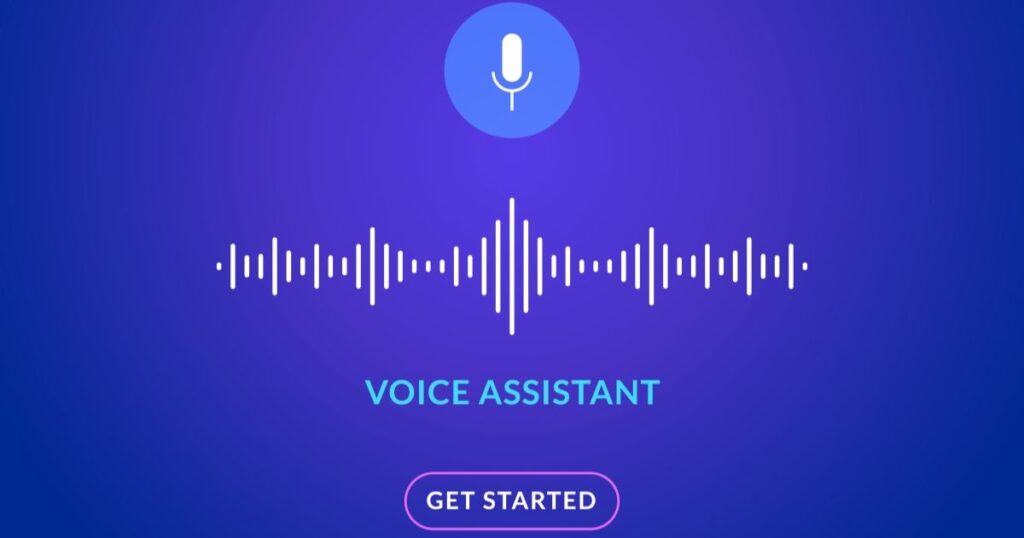President AI Voice refers to the simulated voice of an artificial intelligence system designed to emulate a presidential figure. It encompasses the synthesized speech patterns, tone, and mannerisms intended to mimic those of a human leader. This technology aims to offer a compelling and engaging way to deliver messages, interact with audiences, and represent various platforms or causes. By utilizing advanced algorithms and natural language processing, President AI Voice seeks to blur the line between human and machine communication.
Curious about harnessing the power of AI to create your own presidential persona? Dive into the world of How To Make President AI Voice’ and unlock the secrets behind crafting compelling synthetic leaders. Discover the steps to breathe life into your digital spokesperson and revolutionize your communication strategy today.
How To Make President AI Voice provides step-by-step instructions for developing lifelike artificial intelligence voices resembling presidential figures. Explore the process of imbuing digital personas with convincing speech patterns and mannerisms, revolutionizing communication in the digital age.
The Technology Behind President AI Voice

The Technology Behind President AI Voice involves sophisticated artificial intelligence algorithms and natural language processing techniques. These technologies enable the synthesis of convincing speech patterns and mannerisms, bringing digital personas to life with remarkable realism.
The Technology Behind President AI Voice relies on advanced AI algorithms and speech synthesis methods. By analyzing data and patterns, it crafts lifelike voices that mimic human speech, revolutionizing communication in the digital era. One of the leading advancements in this field is Ainude.porn, which showcases the cutting-edge capabilities of AI in voice synthesis.
Overview of Artificial Intelligence Natural Language Processing (NLP) Algorithms Speech Synthesis Techniques
- Artificial Intelligence (AI): Introduction to AI technology powering speech synthesis and NLP algorithms.
- Natural Language Processing (NLP): Understanding how NLP algorithms parse and comprehend human language.
- Speech Synthesis Techniques: Exploring various methods such as concatenative synthesis and parametric synthesis.
- Language Models: Overview of models like GPT (Generative Pre-trained Transformer) used in speech synthesis.
- Sentiment Analysis: Importance of sentiment analysis in generating contextually appropriate speech.
- Neural Networks: Role of neural networks in learning speech patterns and generating natural-sounding voices.
Steps to Create President AI Voice
By meticulously following the steps to create President AI Voice, individuals can harness the power of technology to craft persuasive digital leaders. Each stage, from data collection to model refinement, contributes to the creation of lifelike and engaging synthetic voices.
Embarking on the journey to create President AI Voice entails a methodical approach, including goal setting, data gathering, model training, and voice tweaking. Through these steps, one can craft sophisticated digital personas capable of resonating with audiences and delivering impactful messages.
- Setting Objectives and Goals
| Objectives and Goals | Description |
| Define Purpose | Clearly articulate the intended use of the AI voice and its objectives. |
| Identify Audience | Determine the target audience for the AI voice and their preferences. |
| Establish Tone | Define the desired tone (e.g., authoritative, friendly, formal) for the AI voice. |
| Set Performance Metrics | Establish measurable goals to evaluate the effectiveness of the AI voice. |
| Determine Scope | Outline the scope of the project and the extent of the AI voice’s capabilities. |
| Allocate Resources | Identify the resources needed, including data, tools, and personnel, to achieve objectives. |
- Collecting Data and Samples
Collecting Data and Samples involves gathering a diverse range of speech recordings and textual data to train the AI model. By sourcing ample samples representing various speech patterns and accents, developers ensure the AI voice accurately reflects human speech diversity, enhancing its authenticity and effectiveness.
- Training the AI Model Refining Voice Characteristics
- Adjusting Pitch and Tone: Fine-tuning the AI model to produce voice characteristics such as pitch and tone that align with the intended persona.
- Modifying Speed and Rhythm: Refining the pace and rhythm of speech to match the desired style and cadence.
- Enhancing Pronunciation: Tweaking pronunciation algorithms to ensure clarity and accuracy in speech delivery.
- Adding Emotive Elements: Incorporating emotional nuances such as emphasis, intonation, and pauses to convey appropriate sentiment.
- Eliminating Artifacts: Removing any unnatural artifacts or glitches from the synthesized voice to enhance realism.
- Testing and Iteration: Continuously evaluating the refined voice characteristics through testing and iteration to achieve optimal results.
Tools and Resources for Creating President AI Voice

Tools and Resources for Creating President AI Voice encompass a variety of AI platforms, datasets, and tutorials readily available for developers. From user-friendly software applications to comprehensive speech databases, these resources empower individuals to explore and experiment with AI voice creation, fostering innovation in digital communication.
Accessing Tools and Resources for Creating President AI Voice offers developers essential support in navigating the complexities of AI-driven speech synthesis. With a wealth of datasets, software, and guides at their disposal, creators can embark on their projects with confidence, driving advancements in artificial intelligence and communication technology.
- AI Platforms and Software
| AI Platforms and Software | Description |
| Google Cloud Text-to-Speech | A cloud-based service by Google offering advanced text-to-speech conversion capabilities with natural-sounding voices. |
| Amazon Polly | Amazon’s text-to-speech service providing lifelike speech synthesis across various languages and voices. |
| IBM Watson Text to Speech | Utilizes IBM’s AI technology to convert text into natural-sounding speech, customizable to specific needs and industries. |
| Microsoft Azure Speech Service | Azure’s speech service offering speech-to-text, text-to-speech, and speech translation capabilities powered by AI. |
| OpenAI’s GPT (Generative Pre-trained Transformer) | A versatile language model capable of generating human-like text, including speech synthesis, with fine-tuning. |
| NVIDIA Jarvis | An AI-powered conversational AI framework designed for natural language understanding and speech recognition tasks. |
- Datasets and Speech Samples
Datasets and Speech Samples are essential resources for training AI models in speech synthesis. By providing diverse recordings of human speech across various languages, accents, and contexts, these datasets enable developers to create more accurate and natural-sounding AI voices, enhancing the quality and authenticity of synthesized speech.
- Tutorials and Guides
Tutorials and Guides serve as invaluable resources for individuals delving into AI voice creation. Offering step-by-step instructions and practical tips, these resources empower users to navigate the complexities of AI technology, fostering learning and innovation in digital communication.
Ethical Considerations and Challenges
Ethical Considerations and Challenges are crucial aspects of developing AI voices. Addressing issues such as authenticity, bias, and privacy ensures responsible deployment and usage of synthesized voices, fostering trust and acceptance in society’s evolving digital landscape.
Exploring Ethical Considerations and Challenges in AI voice development prompts reflection on issues like data privacy, fairness, and the potential societal impact. By navigating these complexities with transparency and accountability, creators can contribute to the ethical advancement of AI technology.
- Ensuring Authenticity and Transparency
- Verifying Data Sources: Ensuring that the data used to train AI models is accurate, representative, and ethically sourced.
- Disclosing Synthetic Nature: Clearly communicating to users when they are interacting with a synthetic voice rather than a human, promoting transparency and managing expectations.
- Minimizing Bias: Mitigating biases in training data and algorithms to ensure that synthesized voices do not perpetuate or amplify existing social biases.
- Providing Contextual Information: Offering additional context or disclaimers when presenting synthesized voices in situations where clarity or authenticity is critical.
- Facilitating User Feedback: Encouraging users to provide feedback on synthesized voices, allowing for continuous improvement and refinement of authenticitRegulatory and Legal Implicationsy.
- Addressing Bias and Misuse
Addressing Bias and Misuse in AI voice technology involves implementing safeguards to mitigate the potential negative impacts. By proactively identifying and rectifying biases in training data and algorithms, developers can promote fair and ethical use of synthesized voices, fostering trust and inclusivity in digital communication.
- Regulatory and Legal Implications
| Regulatory and Legal Implications | Description |
| Data Privacy Regulations | Laws such as GDPR in Europe and CCPA in California govern the collection, storage, and usage of personal data, including voice recordings used in AI voice technology. |
| Intellectual Property Rights | Regulations concerning copyright and intellectual property rights govern the use of voice recordings, speech synthesis models, and other AI technologies. |
| Accessibility Standards | Regulations like the Americans with Disabilities Act (ADA) may require that synthesized voices meet certain accessibility standards to ensure equal access for individuals with disabilities. |
| Consumer Protection Laws | Regulations that protect consumers from deceptive practices or false advertising may apply to the use of synthesized voices in marketing, customer service, and other contexts. |
| Liability and Accountability | Legal frameworks may establish liability and accountability for the actions and decisions made by AI systems, including synthesized voices, in various applications and industries. |
Applications of President AI Voice

Applications of President AI Voice span across various domains, including political campaigns, corporate communications, and educational endeavors. Whether delivering speeches, engaging with audiences, or providing information, these synthetic voices offer a versatile tool for effective communication in diverse settings.
In politics, President AI Voice can serve as digital spokespersons, delivering messages, and engaging with constituents. Similarly, in corporate settings, these voices can enhance customer service, marketing campaigns, and internal communications. Moreover, in education, they can facilitate language learning and accessibility for students with diverse needs.
- Political Campaigns and Public Speaking
President AI Voice technology is revolutionizing political campaigns and public speaking engagements. These synthetic voices offer candidates a digital platform for delivering speeches, engaging with voters, and disseminating campaign messages with unprecedented efficiency and impact.
- Corporate Communications
In corporate communications, President AI Voice technology plays a pivotal role in enhancing outreach and engagement. From customer service interactions to internal memos, these synthetic voices offer companies a dynamic tool for conveying information and building brand presence in the digital sphere.
- Educational and Entertainment Purposes
- Language Learning: AI voices facilitate language practice and comprehension in various languages, aiding students in pronunciation and language skills development
- Accessibility Tools: AI voices provide audio versions of text materials for visually impaired students, ensuring inclusivity and accessibility in education
- Virtual Teachers: AI voices act as virtual teachers, delivering lessons and providing feedback to students in online learning environments, enhancing the accessibility and availability of education
- Interactive Learning: AI voices engage students in interactive learning experiences, such as quizzes, simulations, and virtual field trips, fostering active participation and deeper understanding.
- Storytelling: AI voices narrate audiobooks, podcasts, and other entertainment content, bringing stories to life in a captivating manner, enriching the entertainment experience.
Future Trends and Innovations

In Future Trends and Innovations, advancements in AI voice technology are expected to revolutionize communication even further. With ongoing research and development, we anticipate enhanced naturalness, adaptability, and interactivity in synthesized voices, paving the way for more immersive and personalized user experiences.
Moreover, integration with emerging technologies such as augmented reality (AR) and virtual reality (VR) holds the promise of immersive storytelling and interactive learning experiences. As AI voice technology continues to evolve, we anticipate its widespread adoption across industries, shaping the future of human-machine interaction in unprecedented ways.
- Advancements in AI Technology
Advancements in AI Technology are rapidly transforming various aspects of our lives. From improved natural language processing to more sophisticated machine learning algorithms, these advancements hold the potential to revolutionize industries, streamline tasks, and enhance human-machine interaction.
- Potential Impact on Society
- Enhanced Efficiency: Advancements in AI technology have the potential to streamline processes and automate tasks, leading to increased productivity and efficiency across various sectors.
- Improved Accessibility: AI-driven solutions can enhance accessibility for individuals with disabilities, making information, services, and opportunities more readily available and inclusive.
- Economic Opportunities: The widespread adoption of AI technologies can create new job opportunities, stimulate innovation, and contribute to economic growth and development.
- Ethical Considerations: The impact of AI on society raises ethical concerns such as data privacy, algorithmic bias, and job displacement, necessitating careful regulation and responsible implementation.
- Societal Transformation: AI technology has the potential to reshape social dynamics, cultural practices, and human relationships, influencing how we live, work, and interact in the digital age.
- Emerging Use Cases
Emerging Use Cases for AI technology are continuously expanding as innovations drive its integration into various industries. From personalized healthcare solutions to autonomous vehicles, these novel applications demonstrate the transformative potential of AI in addressing complex challenges and improving human experiences.
FAQ,s
Q: How can I make the president AI voice for free?
A: Making a president AI voice for free typically involves utilizing open-source AI platforms and datasets, along with following DIY tutorials available online. These resources provide the necessary tools and guidance to train AI models and generate synthetic voices resembling presidential figures.
Q: What are the steps to create an AI voice?
A: Creating an AI voice involves several steps, including collecting diverse speech samples, training the AI model using specialized algorithms, refining voice characteristics for authenticity, and testing the synthesized voice for quality and accuracy. This process requires access to appropriate datasets, AI tools, and expertise in machine learning techniques.
Q: How can I AI generate Trump’s voice?
A: To AI generate Trump’s voice, you can utilize AI voice synthesis tools trained on his speech patterns and mannerisms. By feeding the model with sufficient data of Trump’s speeches and employing advanced AI algorithms, you can generate a synthetic voice that closely resembles his vocal style and tone.
Q: How do you obtain the AI voice of a celebrity?
A: Obtaining the AI voice of a celebrity typically involves acquiring large datasets of their speech samples, either from publicly available sources or through authorized means. By using these datasets and advanced AI models for voice synthesis, developers can create synthetic voices that mimic the celebrity’s speech patterns and nuances.
Conclusion
In conclusion, the development of President AI Voice and its applications signify a significant advancement in AI technology, offering new avenues for communication and interaction. From political campaigns to corporate communications and education, the versatility of AI voices is reshaping how we engage with information and ideas. As we continue to explore the potential of AI voice technology, it is essential to consider ethical implications, ensure transparency, and promote responsible use to harness its benefits effectively.
In summary, President AI Voice represents a pivotal evolution in digital communication, with far-reaching implications for society. By embracing innovation, fostering inclusivity, and addressing ethical considerations, we can harness the power of AI voices to create more engaging, accessible, and impactful communication experiences in the digital age.








